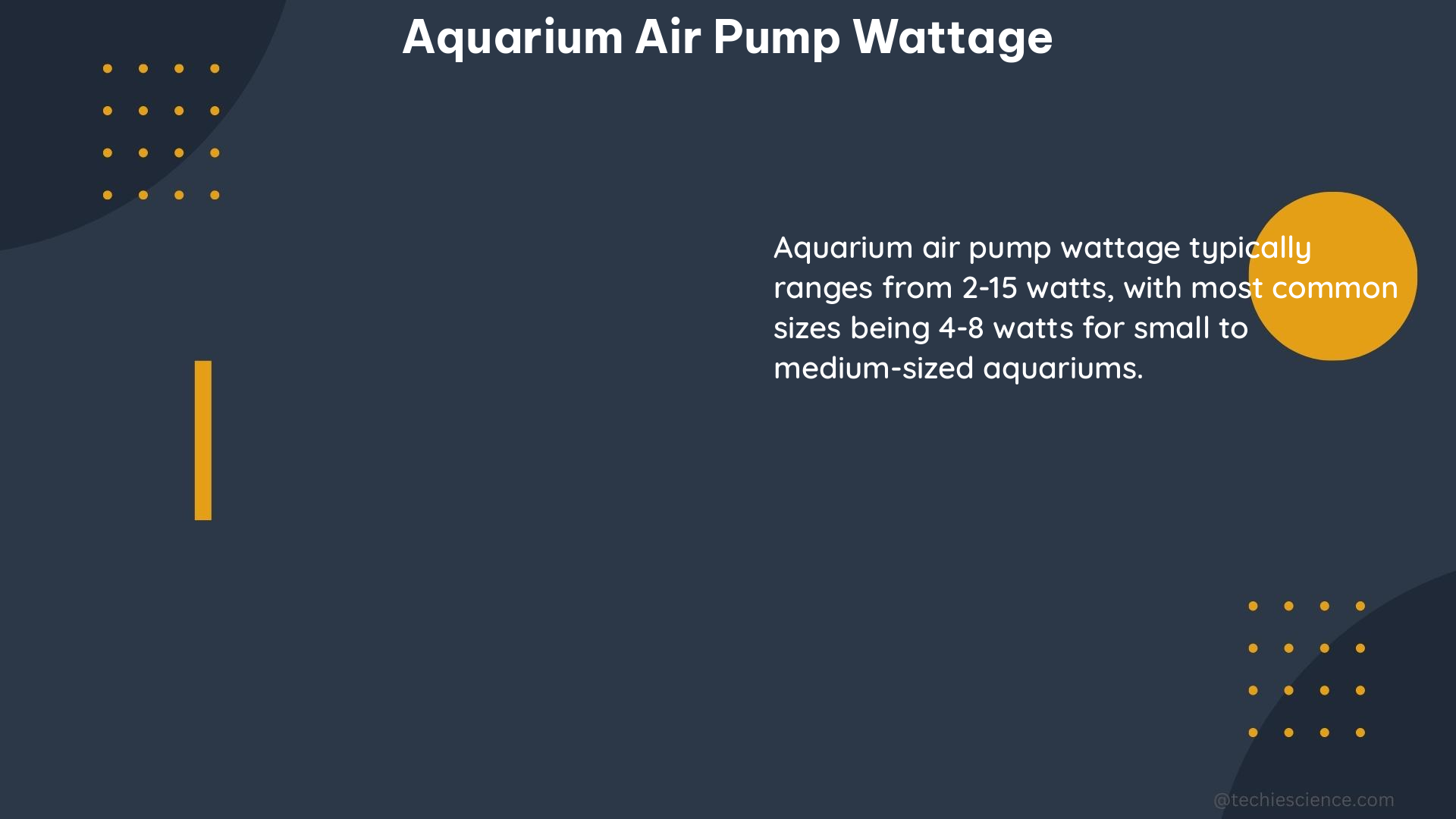Aquarium air pumps are essential components in maintaining a healthy and thriving aquatic ecosystem. However, determining the appropriate wattage for your aquarium can be a daunting task. This comprehensive guide will delve into the intricacies of aquarium air pump wattage, providing you with the knowledge and tools to make informed decisions for your aquarium setup.
Measuring Aquarium Air Pump Airflow
Aquarium air pumps are rated for different tank sizes, but the flow rates are not always provided. To accurately measure the airflow of an air pump, you can utilize two methods: the displacement method and the venturi with a differential pressure sensor.
Displacement Method
The displacement method involves placing the air pump in a tank of water, covering the output with an inverted measuring cup filled with water, and collecting the bubbles for a known period of time. The flow rate can then be calculated by dividing the volume of water displaced by the bubbles by the time.
- Fill a measuring cup with water and turn it upside down over the output of the air pump, which should be submerged in a tank of water.
- Turn on the air pump for a known period of time, such as one minute.
- Collect the bubbles in the measuring cup.
- Measure the volume of water displaced by the bubbles.
- Divide the volume by the time to calculate the flow rate.
Venturi with Differential Pressure Sensor
A more engineered method to measure airflow is to create a venturi with a differential pressure sensor. This setup provides more precise pressure data over time, allowing for a more accurate calculation of the flow rate.
- Cut a small piece of PVC pipe to create a venturi shape, with a narrow throat and wider sections on either end.
- Attach a differential pressure sensor to the narrow throat of the venturi.
- Place the venturi in the discharge hose of the air pump.
- Connect a manometer to the differential pressure sensor to measure the pressure difference across the venturi.
- Use the pressure difference and the orifice size to calculate the flow rate.
Aquarium Air Pump Wattage and Tank Size

When it comes to aquarium air pump wattage, a common question is how to determine if an air pump can handle a certain amount of gallons. As a general rule, a 4-watt air pump can handle a 55-gallon tank with an underground bubbler. However, the flow rate of the air pump also depends on the depth of the air exit.
| Pump Wattage | Tank Size (Gallons) |
|---|---|
| 2 watts | 20-30 gallons |
| 4 watts | 40-60 gallons |
| 6 watts | 60-80 gallons |
| 8 watts | 80-100 gallons |
It’s important to note that the flow rate of an air pump can be affected by the depth of the air exit. For instance, a pump rated for 4 L/min at the surface may only provide 2 L/min at a depth of 80 cm.
Environmental Considerations
The air temperature can also impact the water temperature in the aquarium. If the air pump is placed outside in extreme temperatures, it can cause temperature fluctuations in the tank, making it harder to maintain the desired temperature for the fish.
To mitigate this issue, it’s recommended to place the air pump in a location that is not exposed to significant temperature changes, such as inside the aquarium cabinet or in a temperature-controlled room.
Technical Specifications of Aquarium Air Pumps
When selecting an aquarium air pump, it’s essential to consider the following technical specifications:
- Flow Rate: The volume of air that the pump can move in a given time, usually measured in liters per minute (L/min) or gallons per hour (GPH).
- Pressure: The force that the pump can generate to move the air, usually measured in pounds per square inch (psi) or millimeters of water column (mm WC).
- Wattage: The amount of electrical power that the pump consumes, measured in watts (W).
- Power Source: The type of electrical power that the pump requires, such as AC or DC.
- Operating Environment: The temperature and humidity range that the pump can operate in without compromising its performance or safety.
- Noise Level: The amount of noise that the pump generates, usually measured in decibels (dB).
- Size and Weight: The physical dimensions and weight of the pump, which are important factors to consider when selecting a pump for a specific aquarium setup.
DIY Aquarium Air Pump
If you’re interested in building your own aquarium air pump, you can follow these steps:
- Gather the necessary materials, such as a small DC motor, a propeller, a check valve, some tubing, and a power supply.
- Connect the propeller to the motor shaft.
- Attach the check valve to the output of the propeller to prevent backflow.
- Connect the tubing to the output of the check valve.
- Power the motor with a suitable power supply.
- Adjust the flow rate by changing the speed of the motor or the size of the propeller.
By following these steps, you can create a customized air pump that meets the specific needs of your aquarium setup.
References:
– Measuring Aquarium Air Pump Airflow
– Aquarium Air Pump Size and Wattage
– Aquarium Air Pump Wattage per Gallon
